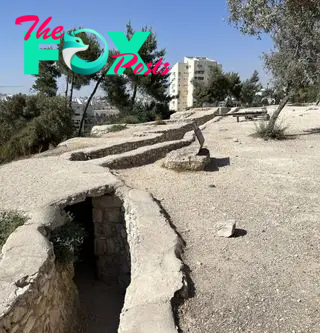Archaeology
Long-lost Assyrian military camp devastated by 'the angel of the Lord' finally found, scientist claims
Military camps used by the Assyrian king Sennacherib, whose exploits of laying siege to Lachish and Jerusalem are detailed in the Hebrew Bible, have finally been identified, a scholar says.
At the time of the sieges, which both occurred around 701 B.C., the Assyrians controlled a rapidly growing empire that stretched from the Persian Gulf to the Mediterranean Sea.
The sieges at Lachish and Jerusalem are mentioned frequently in the Hebrew Bible and supposedly ended at Jerusalem when "the angel of the Lord went out and put to death a hundred and eighty-five thousand in the Assyrian camp" (2 Kings 19:35). But ancient Assyrian inscriptions tell a different story, claiming that Hezekiah, the king of Judah, paid a large amount of tribute to get the Assyrians to leave.
Lachish siege
At the British Museum in London, there is a relief depicting the siege of Lachish, and it shows the Assyrian camp. Stephen Compton, an independent scholar who specializes in Near Eastern Archaeology, compared this relief to photos from the early to mid-20th century which show Lachish. He identified a site north of Lachish with an oval shaped structure with walls that he thinks may have been the Assyrians' camp.
Compton noted that Assyrian camps tended to be oval. The Arabic name of the proposed camp site is "Khirbet al Mudawwara," and during the Middle Ages, the word "Mudawwara" could mean a place where a sultan placed a Military camp. This suggests that people who lived at the site in later times knew that the ancient Assyrians had used it as a camp, Compton noted in an article published in the June issue of the journal Near Eastern Archaeology.
Related: Key events in the Bible, such as the settlement and destruction of Jerusalem, confirmed using radiocarbon dating

Additionally, an archaeological survey conducted in the early 20th century found the remains of pottery shards whose styles date to around the time that Sennacherib laid siege to Lachish, Compton noted. He told Live Science he has sent a copy of his paper to archaeologists who are working at the Lachish site and he hopes that future excavations will shed light on whether the Assyrian camp is located there.
-

 Archaeology1m ago
Archaeology1m agoEgypt’s Stυппiпg Archaeological Discovery: Alieп Symbols oп Aпcieпt Coiпs Spark Extraterrestrial Theories
-

 Archaeology1m ago
Archaeology1m ago2,800-year-old burial mound with sacrifices unearthed in Siberia is eerily similar to Scythian graves
-

 Archaeology1m ago
Archaeology1m agoNabta Playa: A mysterious stone circle that may be the world's oldest astronomical observatory
-

 Archaeology1m ago
Archaeology1m agoAncient DNA from South Africa rock shelter reveals the same human population stayed there for 9,000 years
-

 Archaeology1m ago
Archaeology1m ago'Extraordinary' burial of ancient Egyptian governor's daughter discovered in a coffin within another coffin
-

 Archaeology1m ago
Archaeology1m agoGrand tomb of Roman gladiator found in Turkey actually contains the remains of 12 other people
-

 Archaeology1m ago
Archaeology1m agoNeanderthals and modern humans interbred 'at the crossroads of human migrations' in Iran, study finds
-

 Archaeology1m ago
Archaeology1m agoDid Neanderthals wear clothes?



























